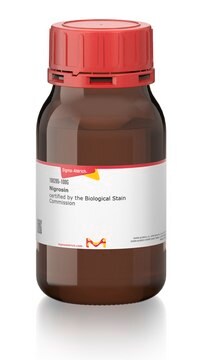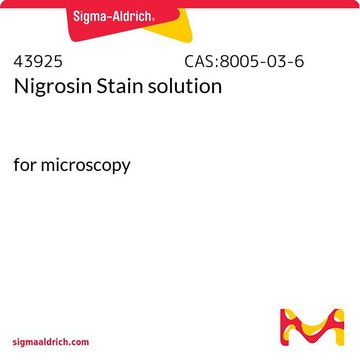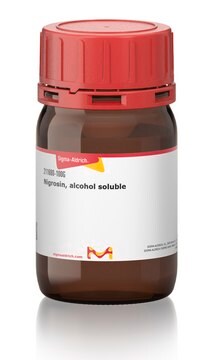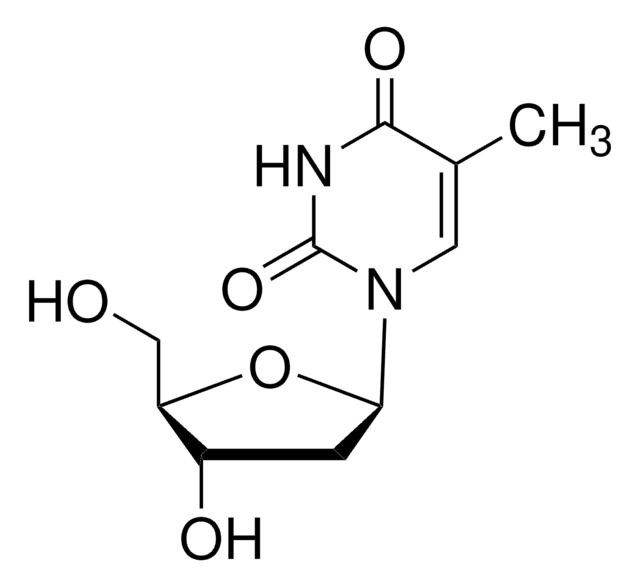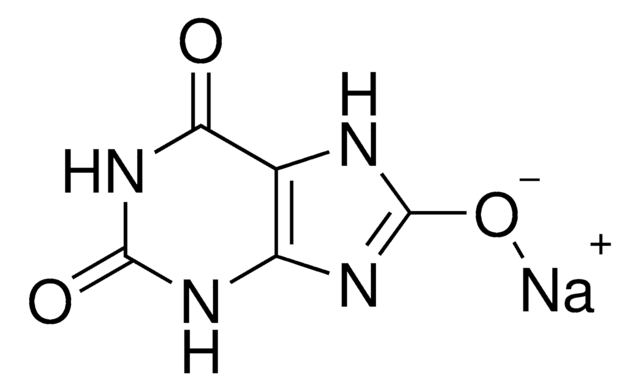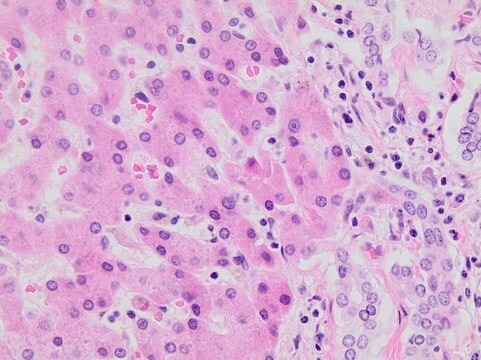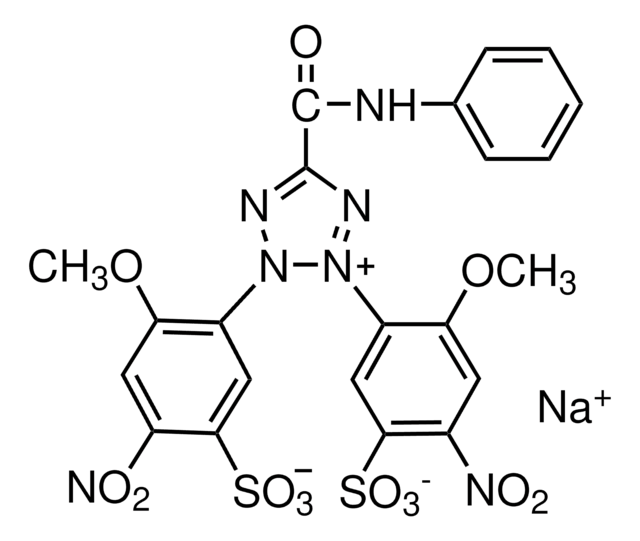N4763
Nigrosin water soluble
powder, BioReagent, suitable for cell culture
Sinónimos:
Acid black 2
Iniciar sesiónpara Ver la Fijación de precios por contrato y de la organización
About This Item
Número de CAS:
Número de índice de color:
50420
Número MDL:
Código UNSPSC:
12352207
NACRES:
NA.75
Productos recomendados
Línea del producto
BioReagent
Formulario
powder
técnicas
cell culture | mammalian: suitable
solubilidad
H2O: 10 mg/mL
¿Está buscando productos similares? Visita Guía de comparación de productos
Descripción general
Nigrosin is an acidic dye, useful for negative staining, in which only the background is stained.
Aplicación
Nigrosin water soluble has been used to stain live sperm.
Used as a viable cell staining agent especially in stem cell biology.
Código de clase de almacenamiento
13 - Non Combustible Solids
Clase de riesgo para el agua (WGK)
WGK 3
Punto de inflamabilidad (°F)
Not applicable
Punto de inflamabilidad (°C)
Not applicable
Elija entre una de las versiones más recientes:
¿Ya tiene este producto?
Encuentre la documentación para los productos que ha comprado recientemente en la Biblioteca de documentos.
Los clientes también vieron
Association of chromosomal aberrations and semen quality in egyptian buffalo bulls
Rushdi HE, et al.
Egyptian journal of animal production, 54(2), 95-103 (2017)
Biotechnology-II: Including Cell Biology, Genetics, Microbiology (2007)
Effect of two protocols of cryopreservation on fertilizing capacity of stallion (Equus caballus) semen
Restrepo BG, et al.
Revista Facultad Nacional de Agronomia (Medellin, Colombia), 65(2), 6711-6718 (2012)
A Novelli
Pathologica, 88(3), 188-191 (1996-06-01)
Nigrosin, an aqueous blue-black acid dye of the azine series, in conjunction with Biebrich scarlet, orange G and formic acid as mordant, it is found an excellent triple panchromatic rapid stain for histological purposes. The staining so obtained permits a
L Björndahl et al.
Human reproduction (Oxford, England), 18(4), 813-816 (2003-03-28)
The one-step eosin-nigrosin staining technique for assessment of sperm vitality was developed in the 1950s for various mammalian species. Although commonly used on human sperm in semen, a validation for this use has not previously been published. The technique was
Nuestro equipo de científicos tiene experiencia en todas las áreas de investigación: Ciencias de la vida, Ciencia de los materiales, Síntesis química, Cromatografía, Analítica y muchas otras.
Póngase en contacto con el Servicio técnico